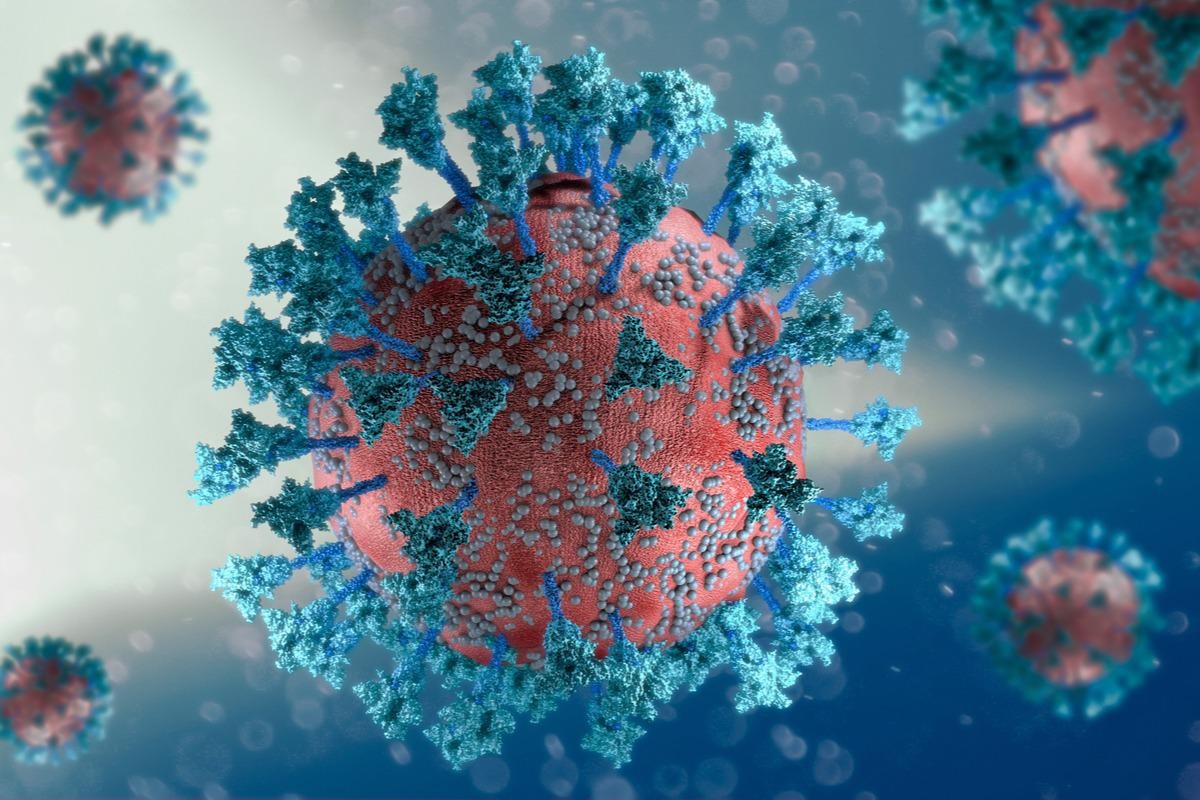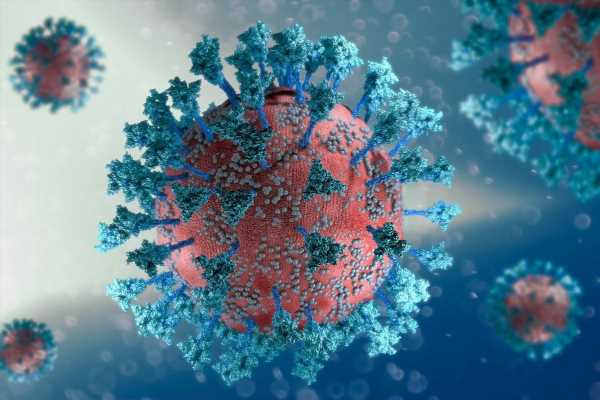Study compares the neutralizing potential of antibodies against two Omicron variants
A new study posted to the medRxiv* preprint server investigates if the two severe acute respiratory syndrome coronavirus 2 (SARS-CoV-2) Omicron variants BA.1 and BA.2 are comparable with respect to their ability to evade the host immunity induced by vaccination or prior infection.
 Study: Comparable Neutralization of the SARS-CoV-2 Omicron BA.1 and BA.2 Variants. Image Credit: Naeblys/Shutterstock
Study: Comparable Neutralization of the SARS-CoV-2 Omicron BA.1 and BA.2 Variants. Image Credit: Naeblys/Shutterstock
Omicron variant B.1.1.529
The Omicron variant of SARS-CoV-2, B.1.1.529, has three lineages BA.1, BA.2, and BA.3. Since Omicron BA.1 escapes neutralizing antibodies (NAbs) induced by vaccination or prior infection, it rapidly became a dominant variant in the population. Now, Omicron BA.2 is observed with an increased frequency in several parts of the world. This indicates that compared to Omicron BA.1, Omicron BA.2 has a selective advantage. The sequences of Omicron BA.1 and BA.2 have several common mutations. However, both variants also have unique mutations. This makes these two variants subtly different. Omicron BA.1 evades NAbs. Does Omicron BA.2 also evade NAbs?
This study compares the neutralizing potential of NAbs from individuals against three SARS-CoV-2 variants – WA1/2020 strain (Wuhan/WIV04/2019), Omicron B.1.1.529 BA.1, and Omicron B.1.1.529 BA.2.
Study methods
This study included 24 individuals who had received two doses and a booster dose of the mRNA BNT162b2 vaccine and eight individuals who had prior SARS-CoV-2 infection. Samples were obtained from the specimen biorepository at Beth Israel Deaconess Medical Center (BIDMC). Individuals were excluded from the study if the vaccinated and boosted individuals had prior SARS-CoV-2 infection, received other coronavirus disease 2019 (COVID-19) vaccines, or had received immunosuppressive medications.
The samples were used to perform a pseudovirus neutralizing antibody assay. Pseudoviruses of SARS-CoV-2 variants WA1/2020, Omicron BA.1, and Omicron BA.2 were generated. The pseudoviruses expressing a luciferase reporter gene were used to estimate the neutralizing antibodies. HEK293T cells were used to generate the pseudotype viruses. The pseudoviruses were collected from the supernatants of transfected HEK293T cells.
To assess the neutralization activity of human serum, heat-inactivated serum samples were prepared and mixed with the pseudovirus. This mixture was used to transfect HEK293T cells. Infection was estimated using the luciferase assay. Levels of SARS-CoV-2 neutralizing antibodies were calculated as the sample dilution at which there was a 50% reduction (NT50) in relative light units compared to the average of the virus control wells.
NAb responses
After two doses of the BNT162b2 vaccine, median pseudovirus NAb responses were 658 against WA1/2020, 29 against Omicron BA.1, and 24 against Omicron BA.2. Thus, with full vaccination, the median NAb levels against Omicron BA.1 were 23-fold lower, and against Omicron BA.2 were 27-fold lower compared to the WA1/2020 variant. After six months, the median responses reduced to 129 against WA1/2020 and less than 20 against Omicron BA.1 and Omicron BA.2.
The NAb responses were estimated again at two weeks following the booster dose. The median NAb levels increased to 6,539 against WA1/2020, 1,066 against Omicron BA.1, and 776 against Omicron BA.2. Once again, the median NAb levels against Omicron BA.1 were 6.1-fold lower, and against Omicron BA.2 were 8.4-fold lower compared to the WA1/2020 variant. The median Omicron BA.2 NAb levels were 1.4-fold lower than Omicron BA.1 NAb titers.
The NAb levels were also evaluated in 8 individuals who were diagnosed as COVID-19 positive. The evaluation was done a median of 14 days after the diagnosis. In this duration, more than 99% of the infections were caused by the Omicron BA.1 variant. The median NAb responses were 4,046 against the WA1/2020, 3,249 against the Omicron BA.1, and 2,448 against the Omicron BA.2. The median NAb levels against Omicron BA.1 were 1.3-fold lower than the Omicron BA.2.
One individual showed negative NAb levels. This individual was unvaccinated and was sampled four days after diagnosis.
Conclusion
This study shows that the NAb levels against Omicron BA.2 were comparable to Omicron BA.1 but 1.3- to 1.4-fold lower. A booster dose of BNT162b2 induced consistent NAb against the Omicron BA.1 and BA.2 variants. Vaccinated individuals infected with Omicron BA.1 had a substantial degree of cross-reactive NAb levels against Omicron BA.2. Thus, these individuals develop robust immunity against the Omicron BA.2 variant.
This study suggests that the increasing frequency of the Omicron BA.2 in the context of the Omicron BA.1 surge is probably related to increased transmissibility and is not contributed by enhanced immune escape. This conclusion has important public health implications.
*Important notice
medRxiv publishes preliminary scientific reports that are not peer-reviewed and, therefore, should not be regarded as conclusive, guide clinical practice/health-related behavior, or treated as established information.
-
Yu, J. et al. (2022) "Comparable Neutralization of the SARS-CoV-2 Omicron BA.1 and BA.2 Variants". medRxiv. doi: 10.1101/2022.02.06.22270533. https://www.medrxiv.org/content/10.1101/2022.02.06.22270533v1
Posted in: Medical Science News | Medical Research News | Disease/Infection News
Tags: Antibodies, Antibody, Assay, Coronavirus, Coronavirus Disease COVID-19, covid-19, Frequency, Gene, heat, immunity, Luciferase, Omicron, Pseudovirus, Public Health, Reporter Gene, Respiratory, SARS, SARS-CoV-2, Severe Acute Respiratory, Severe Acute Respiratory Syndrome, Syndrome, Vaccine, Virus

Written by
Dr. Shital Sarah Ahaley
Dr. Shital Sarah Ahaley is a medical writer. She completed her Bachelor's and Master's degree in Microbiology at the University of Pune. She then completed her Ph.D. at the Indian Institute of Science, Bengaluru where she studied muscle development and muscle diseases. After her Ph.D., she worked at the Indian Institute of Science, Education, and Research, Pune as a post-doctoral fellow. She then acquired and executed an independent grant from the DBT-Wellcome Trust India Alliance as an Early Career Fellow. Her work focused on RNA binding proteins and Hedgehog signaling.
Source: Read Full Article



